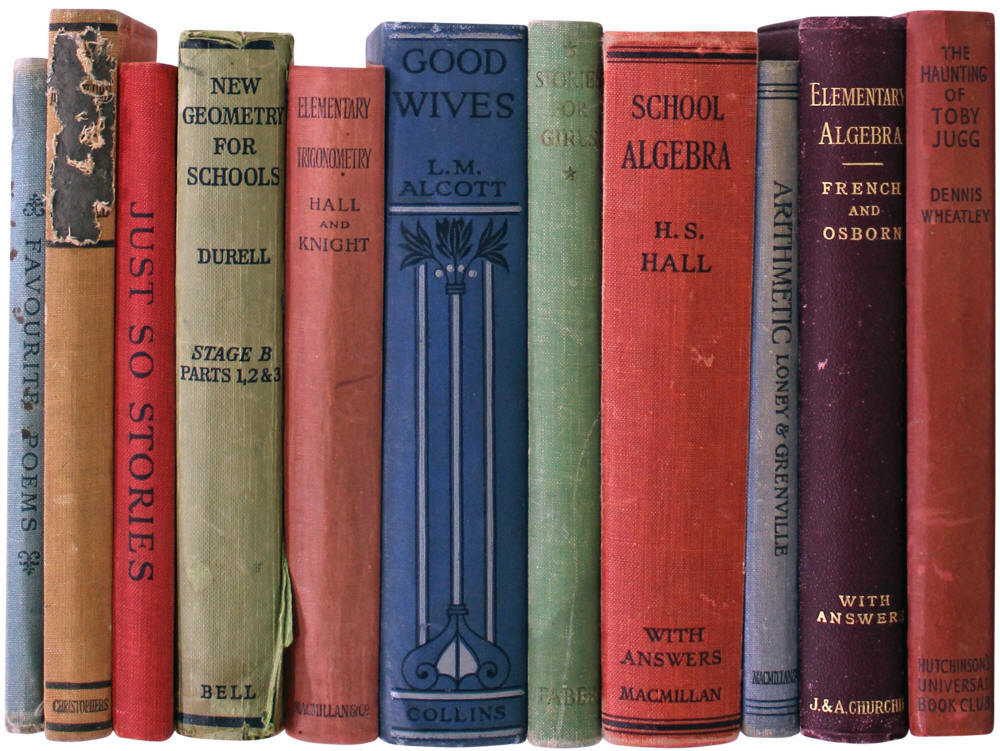Schools
Virtual Museum : Macpherson ●
Railway ●
Farms ●
War ●
Power ●
Roads ●
Business ●
Milk ●
Tea ●
Post ● Books ●
Toys







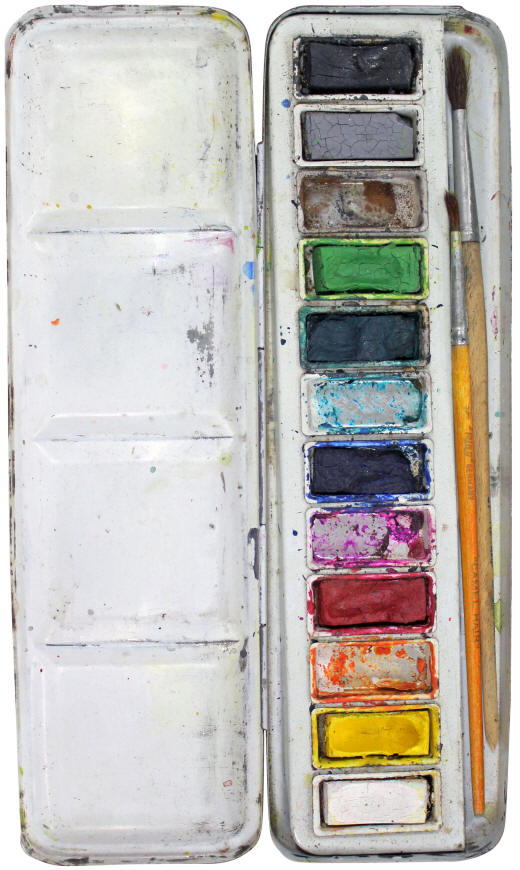
A Country Education
Children, mostly of farmers and railway workers, accompanied their parents onto farms in the bush and railway camps alongside the Midland Railway. Many began their education by undertaking correspondence lessons from home.
When there were ten children of school age living within a radius of three miles, the Education Department would consider establishing a local school. The Department and community would then work together to arrange a suitable building and accommodation for a teacher.
A state school was established at Arrino in 1906, followed by Three Springs in 1908 and both Coorow and Carnamah in 1912.
As farms spread out, more schools were established − at Billeroo, Dudawa, Eneabba, Gunyidi, Inering, Marchagee, Turipa, Waddy Forest, Waddy Well, Winchester and Wongyarra. For many years there was also a Dominican Convent School at Three Springs.
Children, mostly of farmers and railway workers, accompanied their parents onto farms in the bush and railway camps alongside the Midland Railway. Many began their education by undertaking correspondence lessons from home.
When there were ten children of school age living within a radius of three miles, the Education Department would consider establishing a local school. The Department and community would then work together to arrange a suitable building and accommodation for a teacher.
A state school was established at Arrino in 1906, followed by Three Springs in 1908 and both Coorow and Carnamah in 1912.
As farms spread out, more schools were established − at Billeroo, Dudawa, Eneabba, Gunyidi, Inering, Marchagee, Turipa, Waddy Forest, Waddy Well, Winchester and Wongyarra. For many years there was also a Dominican Convent School at Three Springs.
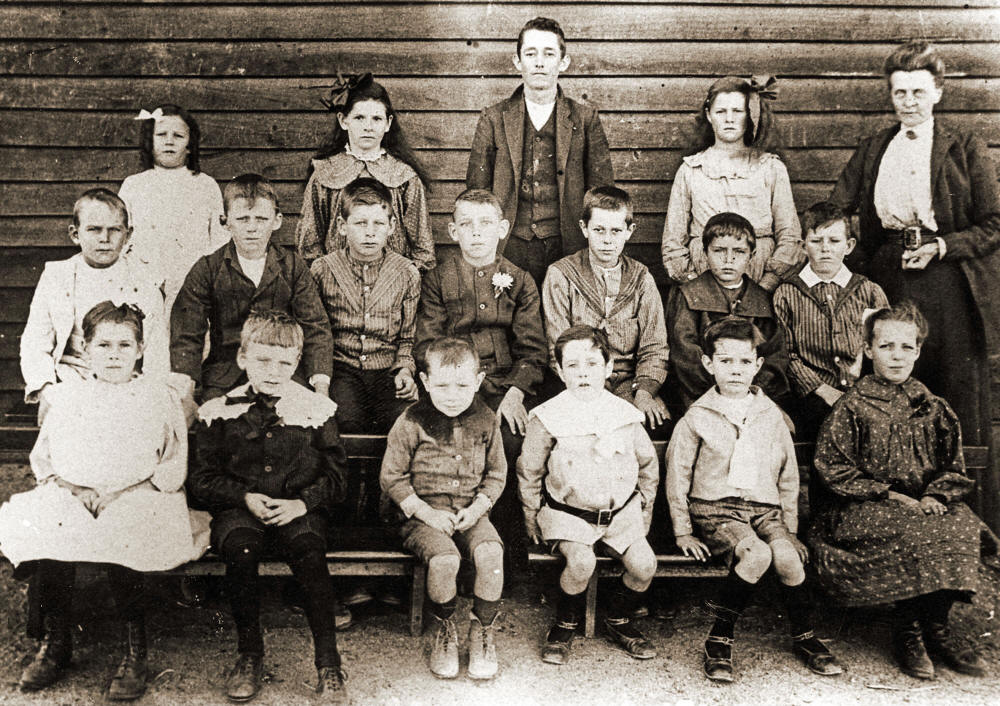
Above: Arrino State School in 1911
The reason for so many schools was that travelling long distances wasn't possible as the only form of transport for most families was to walk, ride a horse or travel in a horse-drawn sulky or buggy.
"The first year of school in Carnamah... Mother drove us in a buggy the six or seven miles in the morning and came to fetch us in the afternoon. She went home in between and did housework, cooked dinner... made bread cakes and served morning and afternoon tea. When we learnt to ride [a horse] and drive ourselves to school it let Mother off the hook." − Madge Rooke
Right: Bell from the Inering State School
Below: Inering State School, which opened in 1928 on the Inering Estate in Carnamah
The reason for so many schools was that travelling long distances wasn't possible as the only form of transport for most families was to walk, ride a horse or travel in a horse-drawn sulky or buggy.
"The first year of school in Carnamah... Mother drove us in a buggy the six or seven miles in the morning and came to fetch us in the afternoon. She went home in between and did housework, cooked dinner... made bread cakes and served morning and afternoon tea. When we learnt to ride [a horse] and drive ourselves to school it let Mother off the hook." − Madge Rooke
Right: Bell from the Inering State School
Below: Inering State School, which opened in 1928 on the Inering Estate in Carnamah
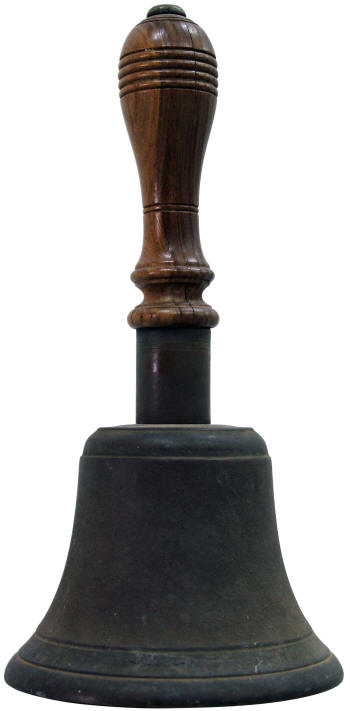
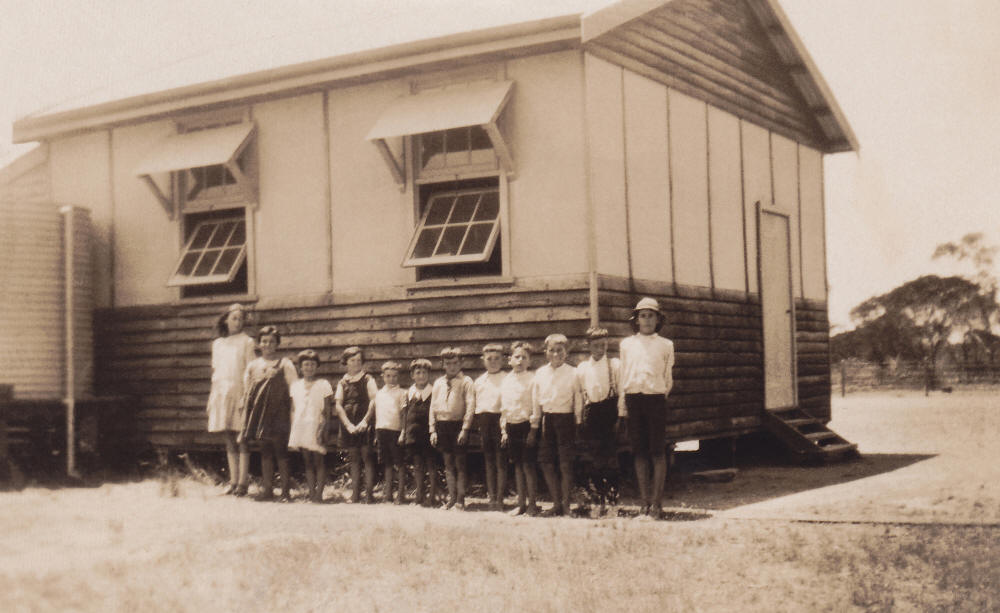
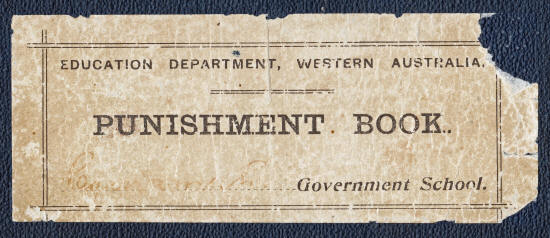
If you misbehaved at school it was once commonplace to be physically
disciplined by being struck with a cane.
Don Reynolds recalled: "In those days there was a Black Book. My name is in it! I believe one was for talking and one for throwing stones at the girls toilet."
Below: Page from the Punishment Book of the Carnamah State School
Don Reynolds recalled: "In those days there was a Black Book. My name is in it! I believe one was for talking and one for throwing stones at the girls toilet."
Below: Page from the Punishment Book of the Carnamah State School
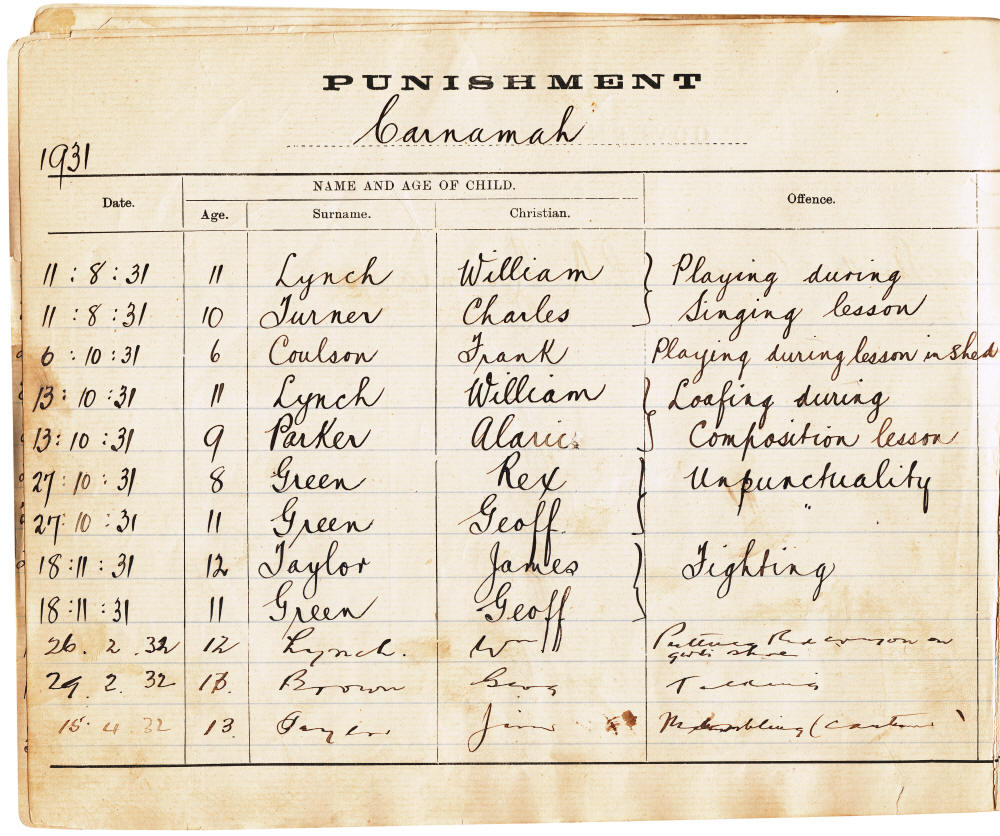
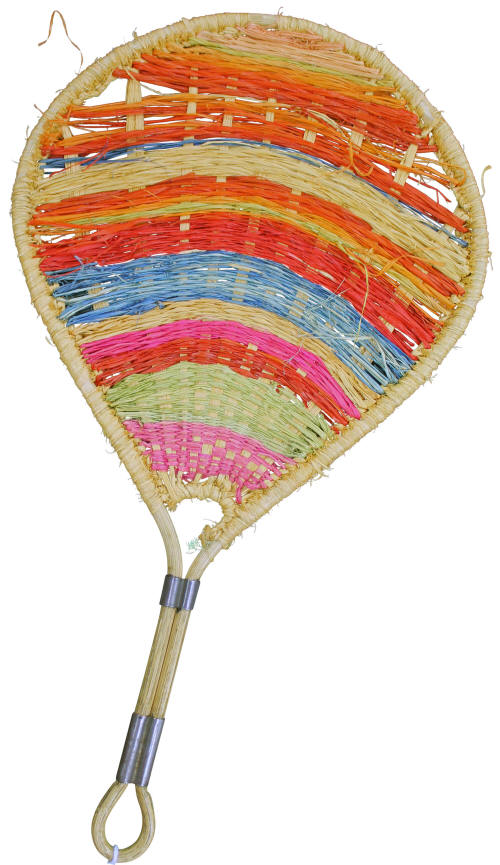
Right: Cane & Raffia Work
Cane & Raffia Work was a craft that was taught at primary schools across Western Australia. The fibres come from Raffia palms, which are native to parts of Africa and South America.
Rachel Power made this fan as a student at the Carnamah State School. She won a 1st prize for Cane & Raffia Work in the Educational section of the Carnamah Agricultural Show in 1935 − very possibly for this very fan!
When Rachel began school as a six year old in 1933 she walked two a half miles (four kilometres) to school each day and the same again to get home. The next year her 12 year old brother was given a bicycle and he then rode to school with the two of them on his bike.
Below: Students at the Carnamah State School in 1935. Rachel is sixth from the left in the back row.
Cane & Raffia Work was a craft that was taught at primary schools across Western Australia. The fibres come from Raffia palms, which are native to parts of Africa and South America.
Rachel Power made this fan as a student at the Carnamah State School. She won a 1st prize for Cane & Raffia Work in the Educational section of the Carnamah Agricultural Show in 1935 − very possibly for this very fan!
When Rachel began school as a six year old in 1933 she walked two a half miles (four kilometres) to school each day and the same again to get home. The next year her 12 year old brother was given a bicycle and he then rode to school with the two of them on his bike.
Below: Students at the Carnamah State School in 1935. Rachel is sixth from the left in the back row.
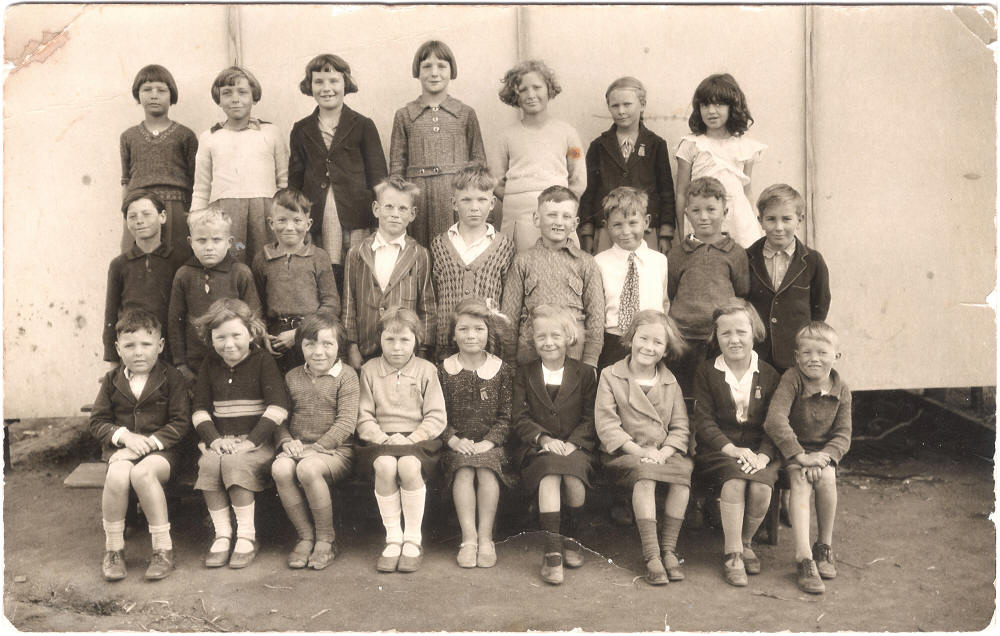
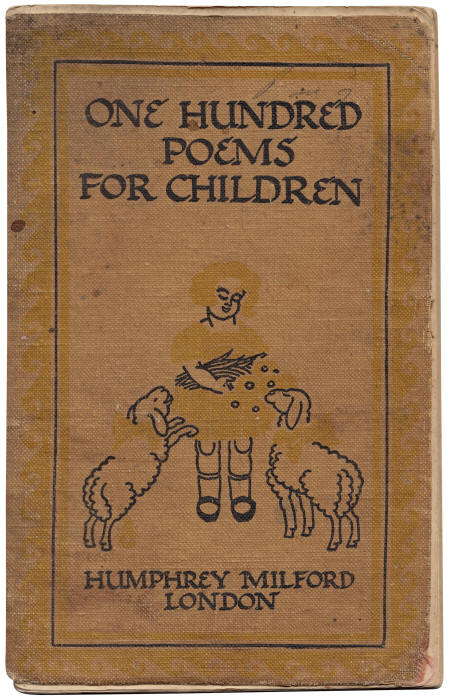
Left: School teacher Winnie Raffan's book
Miss Winnie Raffan ran the one-teacher Winchester State School in 1923 for an annual salary of £222. The school operated from a house on her father's Inchgower Farm but closed due to low attendance. When the number of children increased, the school was reopened with an official school building in 1928.
Page 40: LOST TIME
Timothy took his time to school,
Plenty of time he took :
But some he lost in the tadpole pool,
And some in the stickle-back brook.
Ever so much in the linnet's nest,
And more in the five-barred gate −
Timothy took his time to school
But he lost it all and was late.
Miss Winnie Raffan ran the one-teacher Winchester State School in 1923 for an annual salary of £222. The school operated from a house on her father's Inchgower Farm but closed due to low attendance. When the number of children increased, the school was reopened with an official school building in 1928.
Page 40: LOST TIME
Timothy took his time to school,
Plenty of time he took :
But some he lost in the tadpole pool,
And some in the stickle-back brook.
Ever so much in the linnet's nest,
And more in the five-barred gate −
Timothy took his time to school
But he lost it all and was late.

Right: Opening of the Billeroo School Hall at East
Winchester in 1929
"We thought it was wonderful to go to school barefoot as the Australians did. Even in winter when it was freezing cold we wouldn’t give in to put shoes and socks on." − English born Madge Rooke, who settled with her parents on a Ready-Made Farm in Carnamah in 1916
Below: Barefoot siblings Myrtle and Alfred Chapman about to leave for school on their horse Laddie
"We thought it was wonderful to go to school barefoot as the Australians did. Even in winter when it was freezing cold we wouldn’t give in to put shoes and socks on." − English born Madge Rooke, who settled with her parents on a Ready-Made Farm in Carnamah in 1916
Below: Barefoot siblings Myrtle and Alfred Chapman about to leave for school on their horse Laddie
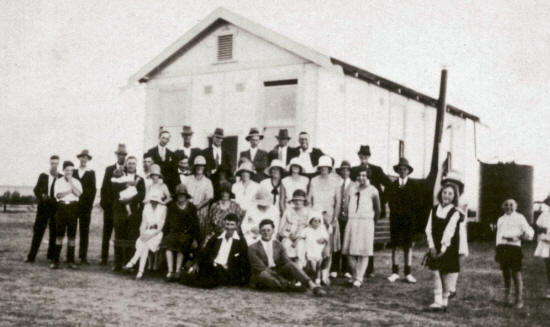
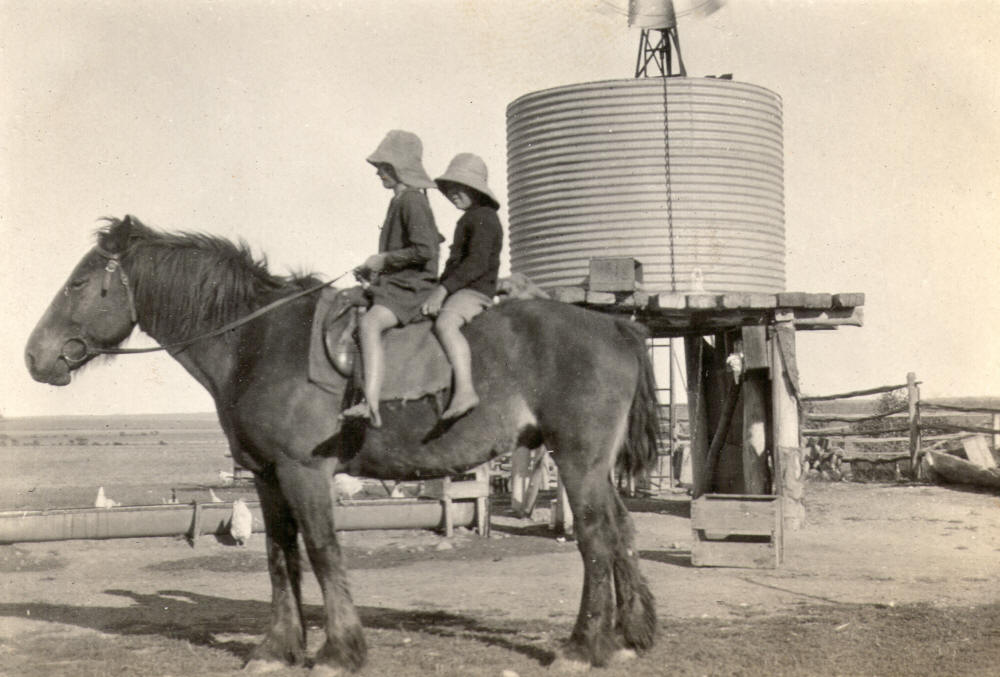
Right: Fretwork
During the 1930s boys were taught fretwork at school, which is a type of ornamental woodwork created with a fretsaw. The cross on the right was made by Alex Power at the Carnamah State School in 1933.
Below: Alex's 1930s Fretsaw and Drill
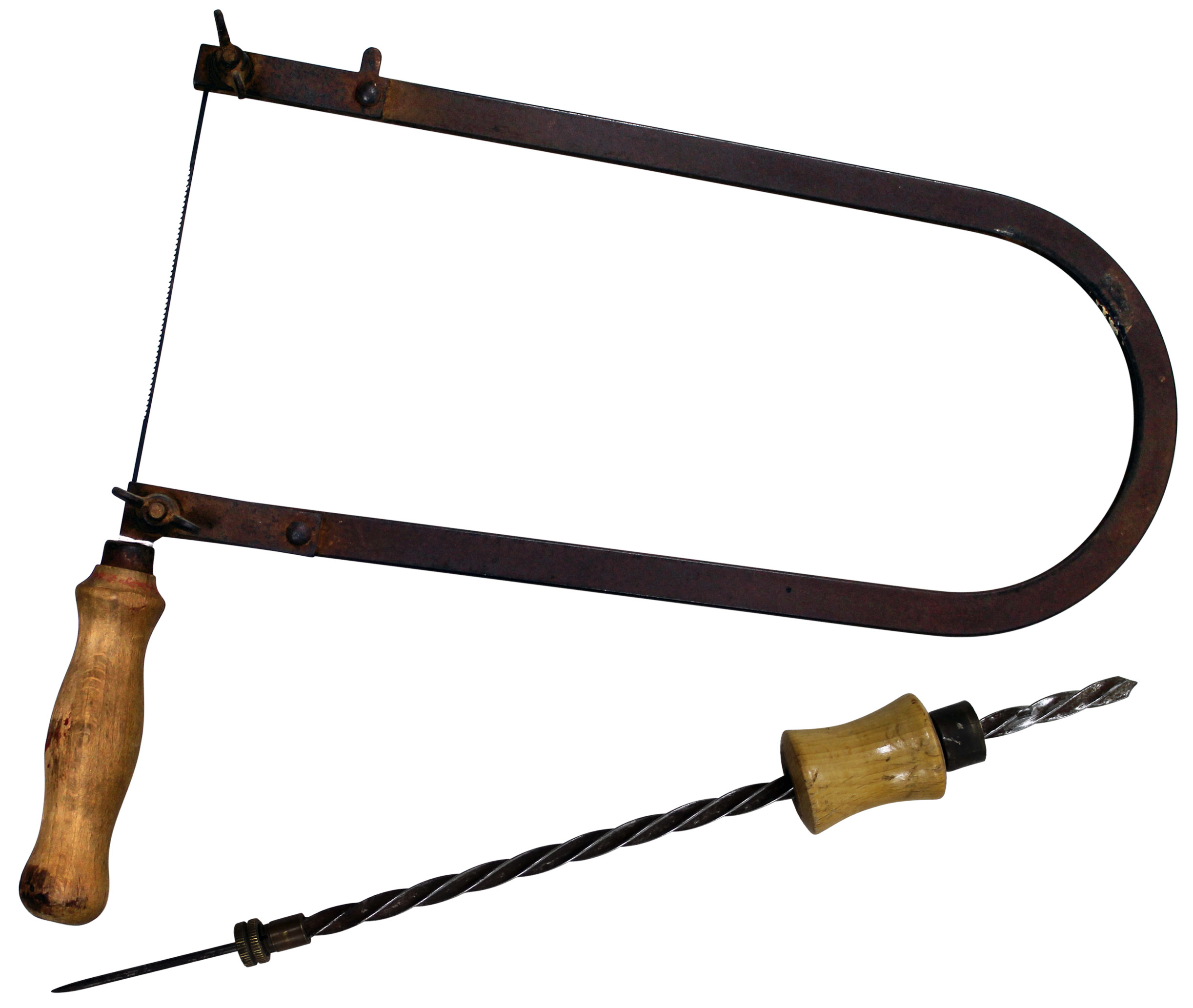
During the 1930s boys were taught fretwork at school, which is a type of ornamental woodwork created with a fretsaw. The cross on the right was made by Alex Power at the Carnamah State School in 1933.
Below: Alex's 1930s Fretsaw and Drill

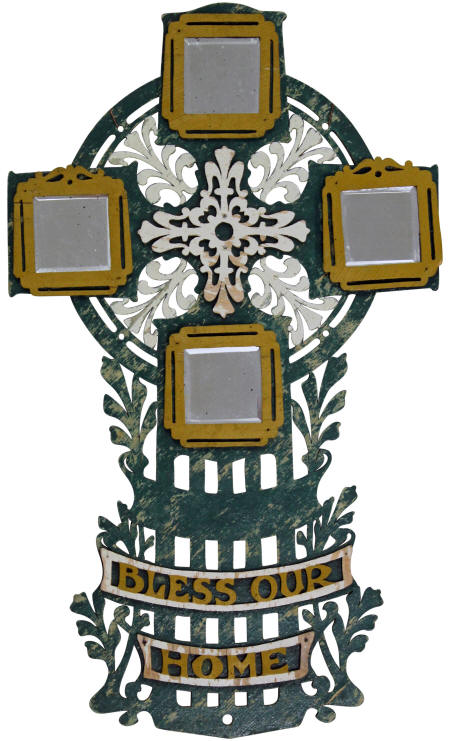
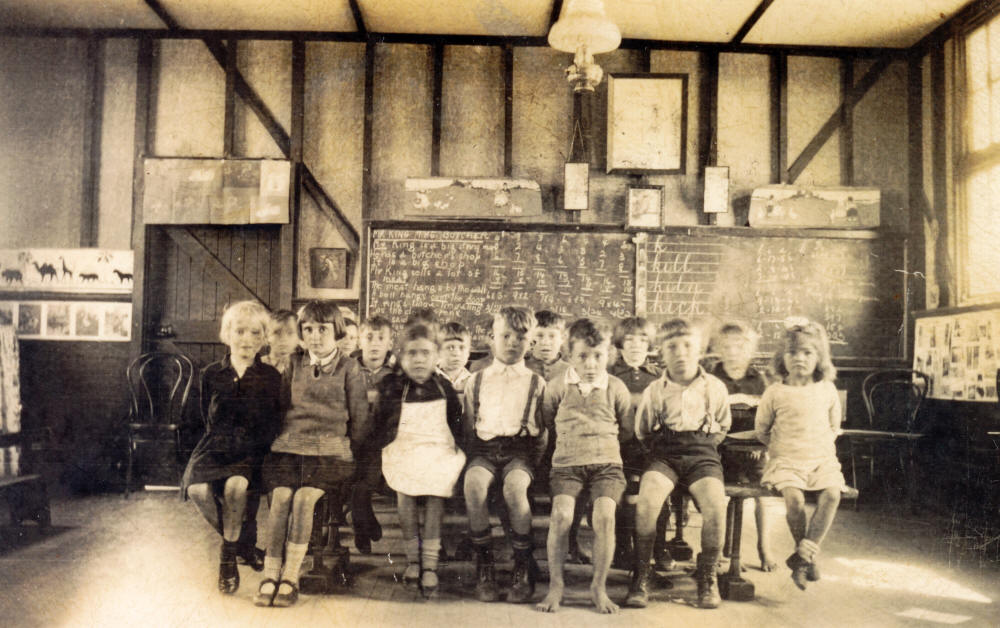
Above: 1930s Winchester State School
Pictured on the left is an Education Department Pastel and Chalk-Drawing Book that was used at the Inering State School by Bobby Balmer in 1928. Below is his Humpty Dumpty!
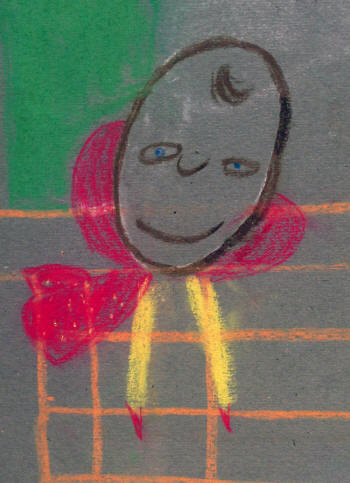
Pictured on the left is an Education Department Pastel and Chalk-Drawing Book that was used at the Inering State School by Bobby Balmer in 1928. Below is his Humpty Dumpty!

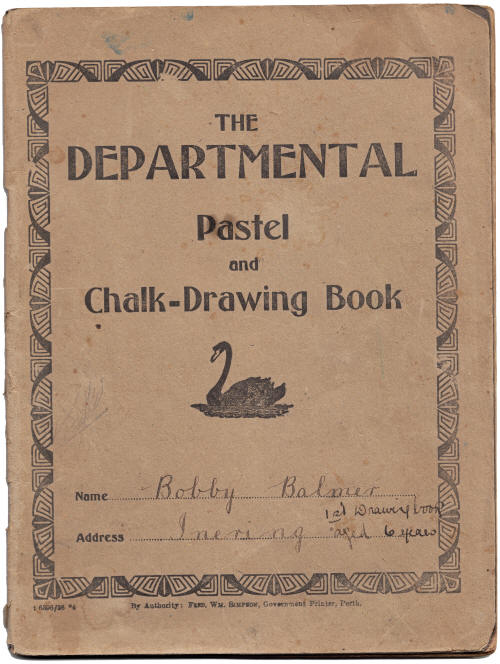
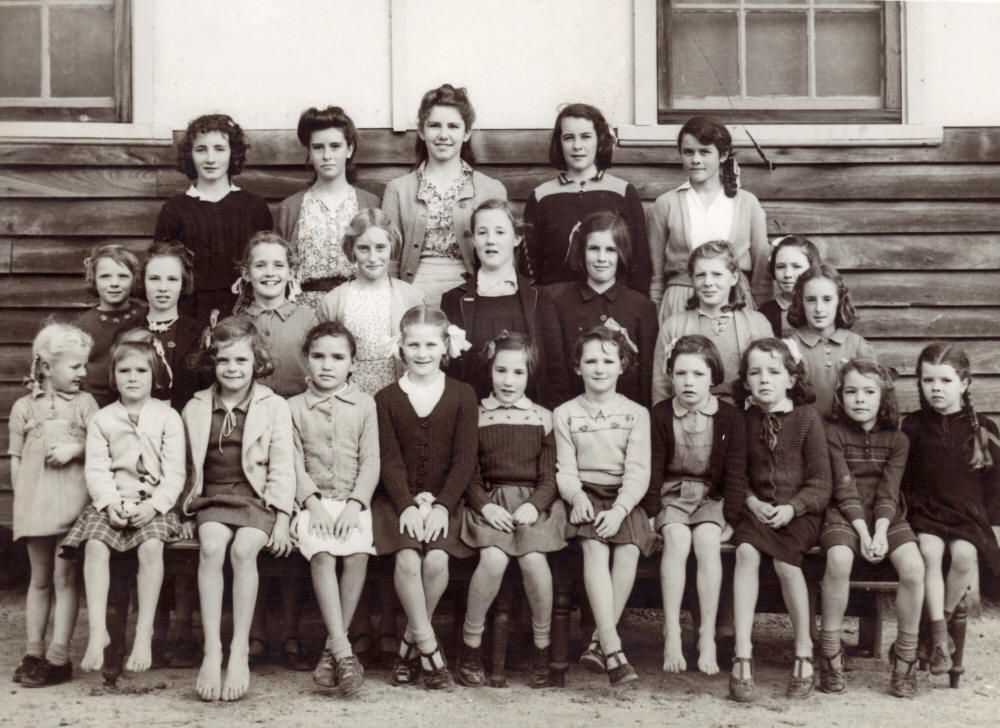
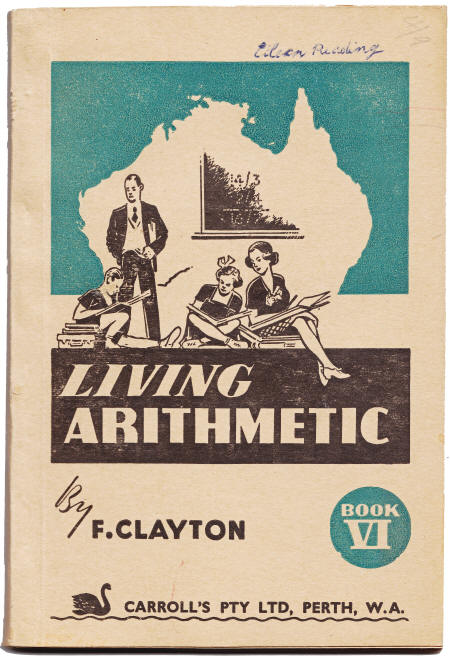
Above: Coorow State School girls in 1946
This Living Arithmetic book was used by Eileen Reading in 1955 for what we would now call maths. Exercise 329 (below) asks what is meant by these?
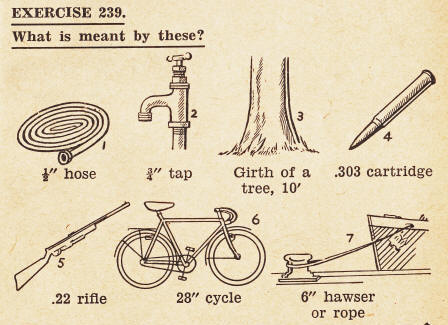
Below: Carnamah State School boys in 1944
This Living Arithmetic book was used by Eileen Reading in 1955 for what we would now call maths. Exercise 329 (below) asks what is meant by these?

Below: Carnamah State School boys in 1944
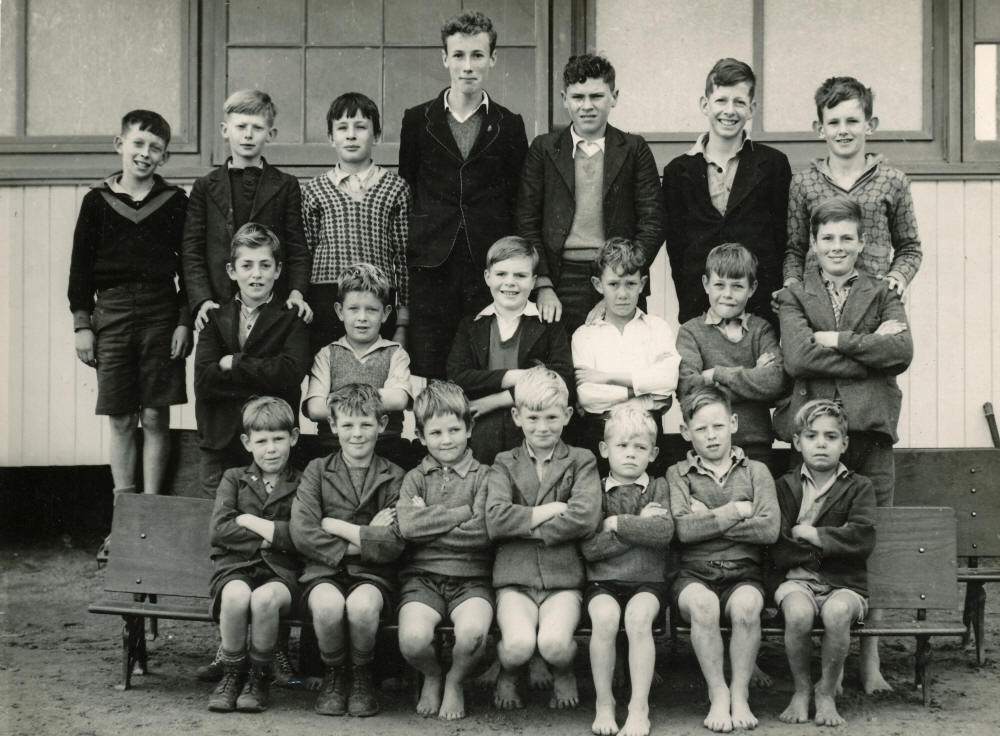
Right: Carnamah-Bunjil Road Bus
As motor vehicles became cheaper and faster, most schools closed and students instead caught buses to Coorow, Carnamah or Three Springs.
Jeanette Allen attended the Winchester State School as a child and later drove the Carnamah-Bunjil Road school bus for 22 years, from 1977 to 1999.
Below: Jeanette's School Case
As motor vehicles became cheaper and faster, most schools closed and students instead caught buses to Coorow, Carnamah or Three Springs.
Jeanette Allen attended the Winchester State School as a child and later drove the Carnamah-Bunjil Road school bus for 22 years, from 1977 to 1999.
Below: Jeanette's School Case
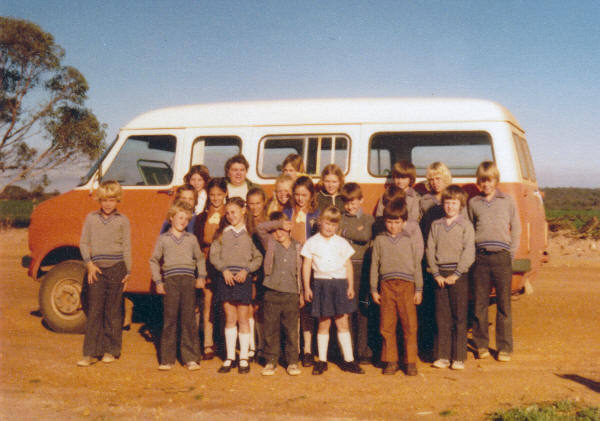
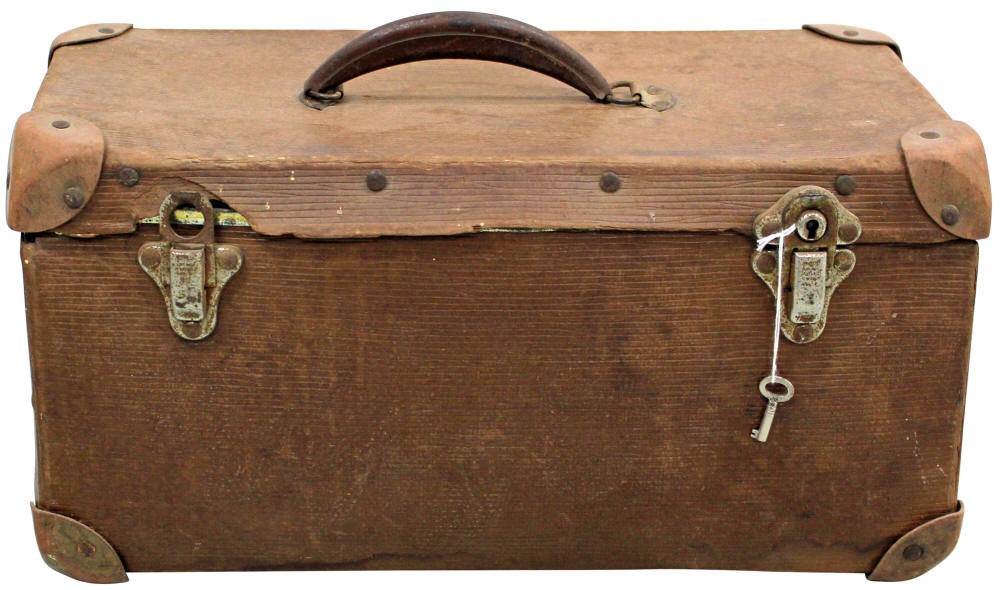
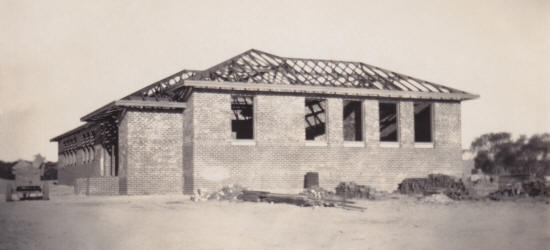
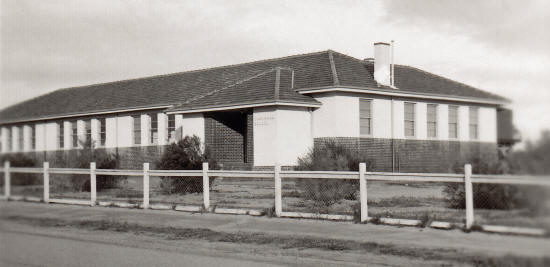
Left: Present-day school in Carnamah, during
construction and following completion
In 1950 local builder Charlie Dallimore finished the construction of a new school in Carnamah. This was later extended to become the Carnamah Junior High School.
Now known as the Carnamah District High School (CDHS), it had a 2016 enrolment of 55 primary and 34 secondary students. At local primary schools there were enrolments of 35 students at Coorow, 30 at Eneabba and 79 at Three Springs.
In 1950 local builder Charlie Dallimore finished the construction of a new school in Carnamah. This was later extended to become the Carnamah Junior High School.
Now known as the Carnamah District High School (CDHS), it had a 2016 enrolment of 55 primary and 34 secondary students. At local primary schools there were enrolments of 35 students at Coorow, 30 at Eneabba and 79 at Three Springs.
Your comment, story
or memories!
Please help enrich our collective history by sharing your own comment, story or memories about being a school student or teacher. Click here for the comment form or send us an email to mail@carnamah.com.au
George Fowler (Billeroo State School in East Winchester)
In 1935 Mum and Dad sent me off to Billeroo school – I was 6 years old and rode a push bike 5½ miles (11 miles a day) hail, rain or shine with a leather school bag on my back. In wet weather I had a weather proof raincoat. Nearly all students rode push bikes to school. However the Chapmans went to school by horse and sulky; at school the horse would graze in an adjoining paddock where there was a school oval and cricket pitch. Most students came to school bare-footed.
I can still remember Tommy Bowran had trouble trying to read “Jack & Jill went up the Hill”. Each student had to stand at the teacher’s table to read. We had to recite 1x2+2 until we learnt it by heart, then we would go onto 2x2=4 and so on.
Some of the teachers I can remember were Miss Fane, Miss Dungey, Miss Horsfall, Mr Black and Mr Runciman. All teachers resided at Tom and Ivy Lawson’s house just one mile east of the school. They rode a push bike to school. I can remember the teacher going to a big desk to lift the top and take out a double handful of Coronation medals. That was in 1937 and we all got one.
Bung eyes were common at school – I think we all had them at some time. On one occasion a student, Helen McCooke, took ill at school and the teacher asked me if I would double dinky her home four miles west of the school. I don’t know what time I got home that day as it was a total of 8 miles to and from her place and then 5½ miles to my home.
Billeroo School was not too bad at the annual school sports - Billeroo won the shield donated by the Carnamah District Road Board in 1939, 1940 and 1941. The students had a garden near the school. We took the vegetables home. For Arbor Days we all had to plant a tree and they remained there until the school was dismantled.
When the Japanese invasion was thought to be imminent students and parents dug trenches fifty yards away from the school. We were drilled to evacuate the school and run to the trenches when the teacher rang the bell. Two trenches were dug 2 feet deep. I can still show you where they were today. In 1944 Mum and Dad sent me off to Guildford Grammar School to further my education.
From what I can recollect, local farmers Fred Cole and Harold and Les Robinson built the Billeroo school and made the inside fittings like the mantelpiece. In later years the school was dismantled and re-built at the Winchester Tennis Club. From there it was moved and became Jimmy Ovens’ chemical shed in Coorow. Two stools from the Billeroo School are now in the Carnamah Museum. In Australia’s Bicentennial Year, 1988, a plaque was placed on a large limestone rock to mark the site of the Billeroo School on the corner of Rowland Road and Road 13.
Jill Tilly (Coorow State School in Coorow)
I have very fond memories of Coorow State School. My parents moved into the town so that I could start school as there was no school bus going north. I used to walk to school on a track through the block that later had the new Post Office, across the creek and up through the scrub to the school. The rough path was used by other families of children – Glovers, Doneys, O’Callaghans, Comelys and Johns. We looked for wildflowers and birds as we went. If the creek was running we had to go the long way round via the Co-op and along the main road, across the footbridge near the Midland Railway dam, in front of the old wooden hall and so into the school grounds. When the creek began to dry out we used to catch tadpoles and put them in a jar, take them to school and hope they survived and changed into frogs.
There were no school uniforms and some children came to school in bare feet. The two-teacher State School consisted of two wooden buildings - one for each teacher. The school grounds and tennis courts were gravel. There were two bough sheds where students who came by bus could eat their lunches. There was no refrigerator or esky to keep their lunches cool though I seem to remember a large cylindrical canvas water bag hanging on the porch of the upper school room. There were rain water tanks near the rooms and 2 toilets quite a distance behind and like the homes in the town the pans had to be emptied once a week and they always smelt of phenyl.
At recess time we exchanged little collector cards from cereal packets, played marbles, knuckle bones and hopscotch on the gravel. We explored the dugouts in the scrub left there after the Second World War. Besides single skipping ropes the school had a long rope which two strong children turned and we girls ran in and out of that. The organised group sport was rounders.
How we were taught so well remains a mystery to me and compliments are due to all of our teachers who coped with multiple classes in one room and whose only teaching aids were posters that they had made themselves. It wasn’t until about 1950 that the P. & C. gave the school a wireless and the teacher could tune into school programmes but the reception was very poor most of the time. I admire the Head Teachers - Messrs Weir, Ingram and Larkin - who coped with the small world of country school children after serving during the Second World War.
One of my most vivid memories is of attempting to learn write with a pen. You had to dip the nib of your pen into the open inkwell that sat in a hole on your desk top, bring it to your Copy Book and copy the perfect writing on the top of the page. I ended up with ink blots everywhere in spite of being careful and having blotting paper! The front of a desk had the folding seat for the next student attached to it. Girls didn’t want to sit in front of some boys who used the pen as a weapon and also pulled your hair.
I also remember the Sewing Classes. The female Assistant teacher had to have all of the girls together in her room for sewing once a week. We managed to produce colourful hessian pot holders and work cotton aprons. The poor teacher had to ensure not only that we were doing the various stitches correctly but that everything was kept clean. This was pretty difficult in a crowded room without air conditioning in near 100°F heat. Either someone came to inspect our work once a year or our teacher had to post some of it off to Education Department in Perth. Some of the girls with good voices would be allowed to sing for the rest of us during sewing. At the same time the boys were occupied doing Manual Arts with the Head Teacher.
1951 was an important year. To celebrate 50 years of Federation we met at the ruins of Coorow House and were addressed by Mr Ernest Long, a descendant of the first settlers. Also in 1951 the Commonwealth-State free milk scheme was implemented in W.A. Initially milk was in 1/3 pint glass bottles. I was put off milk for years because after it was delivered in the early morning to Coorow School it sat in crates until recess time without refrigeration!
Highlights of each year were the School picnic at Curinga Well, interschool sports and the break-up concert. However the School picnics were never quite as good as the marvellous Sunday School picnics! Almost all the non Catholic children attended the Sunday School run for years by Mr and Mrs Vic Broun and they spared no effort for the annual picnic transporting us, food, water, marquee, sports equipment on the back of trucks to Curinga Well.
Fay Dougall nee Haynes (Carnamah State School)
I went to the original two roomed school, with Mr & Mrs Kingston teachers at the time. I also attended the new school and planted a gum tree which was one of a row along the front of the building. One other teacher I remember from the old school was Mr Jones. He was very interested in stamp collecting and singing. After attending most of first form High School at the old school on correspondence, my parents sent me off to Geraldton where I spent two years at Proddy Home (Della Hale) with Matron Stanley in Charge.
Tina Piluzzi (Three Sprogs State School)
My dad worked on the railway. My sister and I went to the Three Springs school. I remember there were two classes. 1, 2 and 3 together and 4 and 5. Think 1960 or 61. We lived there from 1957 to 1963 if I remember well. I remember the opening of the swimming pool in those years. Then we moved to Perth.
Keeva Verschoor
I remember seeing Maisie McSwain riding her bike on her way to the Inering school. She lived near Forresters but for some reason she went to school at Inering. I'm not sure if I have her name correctly remembered. It must have been a hard ride on the dirt road.
Carnamah Historical Society & Museum in reply to Keeva Verschoor
It might very possibly have been a generous act on the part of the McSwain family to keep the numbers up at Inering and the school open. When Eileen Berrigan was the teacher at Inering 1931-1933 she lived with her parents in the Carnamah townsite and drove her Baby Austin car out each day. Although her younger brother could have walked to school in Carnamah, for a period of time he went with her out to Inering and was a student there.
Please help enrich our collective history by sharing your own comment, story or memories about being a school student or teacher. Click here for the comment form or send us an email to mail@carnamah.com.au
George Fowler (Billeroo State School in East Winchester)
In 1935 Mum and Dad sent me off to Billeroo school – I was 6 years old and rode a push bike 5½ miles (11 miles a day) hail, rain or shine with a leather school bag on my back. In wet weather I had a weather proof raincoat. Nearly all students rode push bikes to school. However the Chapmans went to school by horse and sulky; at school the horse would graze in an adjoining paddock where there was a school oval and cricket pitch. Most students came to school bare-footed.
I can still remember Tommy Bowran had trouble trying to read “Jack & Jill went up the Hill”. Each student had to stand at the teacher’s table to read. We had to recite 1x2+2 until we learnt it by heart, then we would go onto 2x2=4 and so on.
Some of the teachers I can remember were Miss Fane, Miss Dungey, Miss Horsfall, Mr Black and Mr Runciman. All teachers resided at Tom and Ivy Lawson’s house just one mile east of the school. They rode a push bike to school. I can remember the teacher going to a big desk to lift the top and take out a double handful of Coronation medals. That was in 1937 and we all got one.
Bung eyes were common at school – I think we all had them at some time. On one occasion a student, Helen McCooke, took ill at school and the teacher asked me if I would double dinky her home four miles west of the school. I don’t know what time I got home that day as it was a total of 8 miles to and from her place and then 5½ miles to my home.
Billeroo School was not too bad at the annual school sports - Billeroo won the shield donated by the Carnamah District Road Board in 1939, 1940 and 1941. The students had a garden near the school. We took the vegetables home. For Arbor Days we all had to plant a tree and they remained there until the school was dismantled.
When the Japanese invasion was thought to be imminent students and parents dug trenches fifty yards away from the school. We were drilled to evacuate the school and run to the trenches when the teacher rang the bell. Two trenches were dug 2 feet deep. I can still show you where they were today. In 1944 Mum and Dad sent me off to Guildford Grammar School to further my education.
From what I can recollect, local farmers Fred Cole and Harold and Les Robinson built the Billeroo school and made the inside fittings like the mantelpiece. In later years the school was dismantled and re-built at the Winchester Tennis Club. From there it was moved and became Jimmy Ovens’ chemical shed in Coorow. Two stools from the Billeroo School are now in the Carnamah Museum. In Australia’s Bicentennial Year, 1988, a plaque was placed on a large limestone rock to mark the site of the Billeroo School on the corner of Rowland Road and Road 13.
Jill Tilly (Coorow State School in Coorow)
I have very fond memories of Coorow State School. My parents moved into the town so that I could start school as there was no school bus going north. I used to walk to school on a track through the block that later had the new Post Office, across the creek and up through the scrub to the school. The rough path was used by other families of children – Glovers, Doneys, O’Callaghans, Comelys and Johns. We looked for wildflowers and birds as we went. If the creek was running we had to go the long way round via the Co-op and along the main road, across the footbridge near the Midland Railway dam, in front of the old wooden hall and so into the school grounds. When the creek began to dry out we used to catch tadpoles and put them in a jar, take them to school and hope they survived and changed into frogs.
There were no school uniforms and some children came to school in bare feet. The two-teacher State School consisted of two wooden buildings - one for each teacher. The school grounds and tennis courts were gravel. There were two bough sheds where students who came by bus could eat their lunches. There was no refrigerator or esky to keep their lunches cool though I seem to remember a large cylindrical canvas water bag hanging on the porch of the upper school room. There were rain water tanks near the rooms and 2 toilets quite a distance behind and like the homes in the town the pans had to be emptied once a week and they always smelt of phenyl.
At recess time we exchanged little collector cards from cereal packets, played marbles, knuckle bones and hopscotch on the gravel. We explored the dugouts in the scrub left there after the Second World War. Besides single skipping ropes the school had a long rope which two strong children turned and we girls ran in and out of that. The organised group sport was rounders.
How we were taught so well remains a mystery to me and compliments are due to all of our teachers who coped with multiple classes in one room and whose only teaching aids were posters that they had made themselves. It wasn’t until about 1950 that the P. & C. gave the school a wireless and the teacher could tune into school programmes but the reception was very poor most of the time. I admire the Head Teachers - Messrs Weir, Ingram and Larkin - who coped with the small world of country school children after serving during the Second World War.
One of my most vivid memories is of attempting to learn write with a pen. You had to dip the nib of your pen into the open inkwell that sat in a hole on your desk top, bring it to your Copy Book and copy the perfect writing on the top of the page. I ended up with ink blots everywhere in spite of being careful and having blotting paper! The front of a desk had the folding seat for the next student attached to it. Girls didn’t want to sit in front of some boys who used the pen as a weapon and also pulled your hair.
I also remember the Sewing Classes. The female Assistant teacher had to have all of the girls together in her room for sewing once a week. We managed to produce colourful hessian pot holders and work cotton aprons. The poor teacher had to ensure not only that we were doing the various stitches correctly but that everything was kept clean. This was pretty difficult in a crowded room without air conditioning in near 100°F heat. Either someone came to inspect our work once a year or our teacher had to post some of it off to Education Department in Perth. Some of the girls with good voices would be allowed to sing for the rest of us during sewing. At the same time the boys were occupied doing Manual Arts with the Head Teacher.
1951 was an important year. To celebrate 50 years of Federation we met at the ruins of Coorow House and were addressed by Mr Ernest Long, a descendant of the first settlers. Also in 1951 the Commonwealth-State free milk scheme was implemented in W.A. Initially milk was in 1/3 pint glass bottles. I was put off milk for years because after it was delivered in the early morning to Coorow School it sat in crates until recess time without refrigeration!
Highlights of each year were the School picnic at Curinga Well, interschool sports and the break-up concert. However the School picnics were never quite as good as the marvellous Sunday School picnics! Almost all the non Catholic children attended the Sunday School run for years by Mr and Mrs Vic Broun and they spared no effort for the annual picnic transporting us, food, water, marquee, sports equipment on the back of trucks to Curinga Well.
Fay Dougall nee Haynes (Carnamah State School)
I went to the original two roomed school, with Mr & Mrs Kingston teachers at the time. I also attended the new school and planted a gum tree which was one of a row along the front of the building. One other teacher I remember from the old school was Mr Jones. He was very interested in stamp collecting and singing. After attending most of first form High School at the old school on correspondence, my parents sent me off to Geraldton where I spent two years at Proddy Home (Della Hale) with Matron Stanley in Charge.
Tina Piluzzi (Three Sprogs State School)
My dad worked on the railway. My sister and I went to the Three Springs school. I remember there were two classes. 1, 2 and 3 together and 4 and 5. Think 1960 or 61. We lived there from 1957 to 1963 if I remember well. I remember the opening of the swimming pool in those years. Then we moved to Perth.
Keeva Verschoor
I remember seeing Maisie McSwain riding her bike on her way to the Inering school. She lived near Forresters but for some reason she went to school at Inering. I'm not sure if I have her name correctly remembered. It must have been a hard ride on the dirt road.
Carnamah Historical Society & Museum in reply to Keeva Verschoor
It might very possibly have been a generous act on the part of the McSwain family to keep the numbers up at Inering and the school open. When Eileen Berrigan was the teacher at Inering 1931-1933 she lived with her parents in the Carnamah townsite and drove her Baby Austin car out each day. Although her younger brother could have walked to school in Carnamah, for a period of time he went with her out to Inering and was a student there.
V i r t u a l M u s e u m :
Macpherson ● Railway ● Farms ● War ● Town ● Roads ● Business ● Milk ● Electricity ● Tearooms ● Post ● Books ● Toys
Now featuring 10863 Bushranger presented by Act Belong Commit





